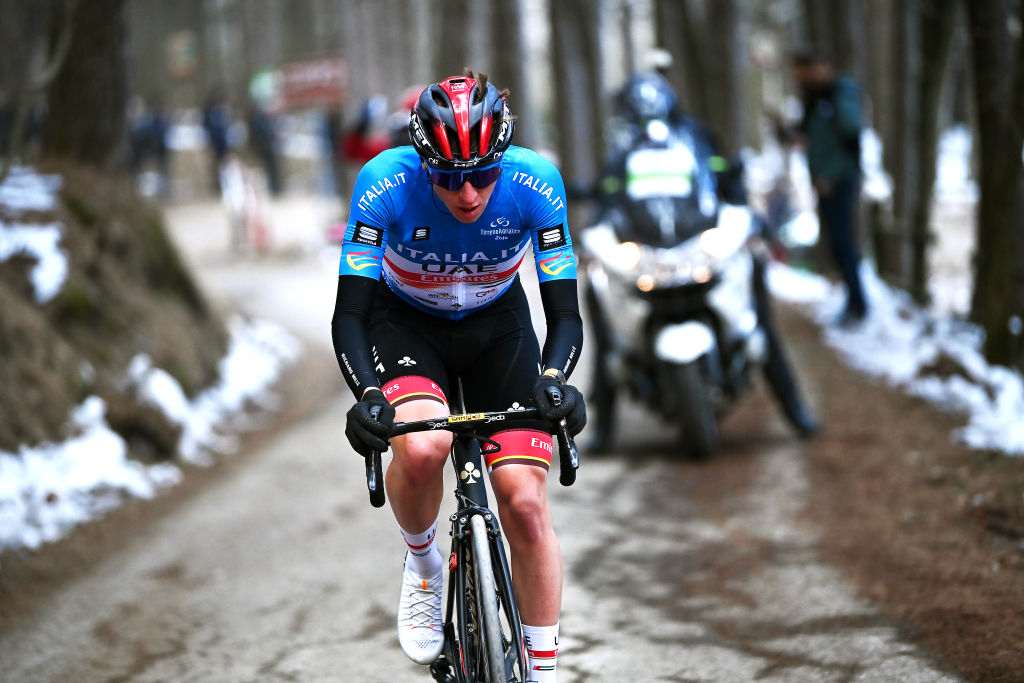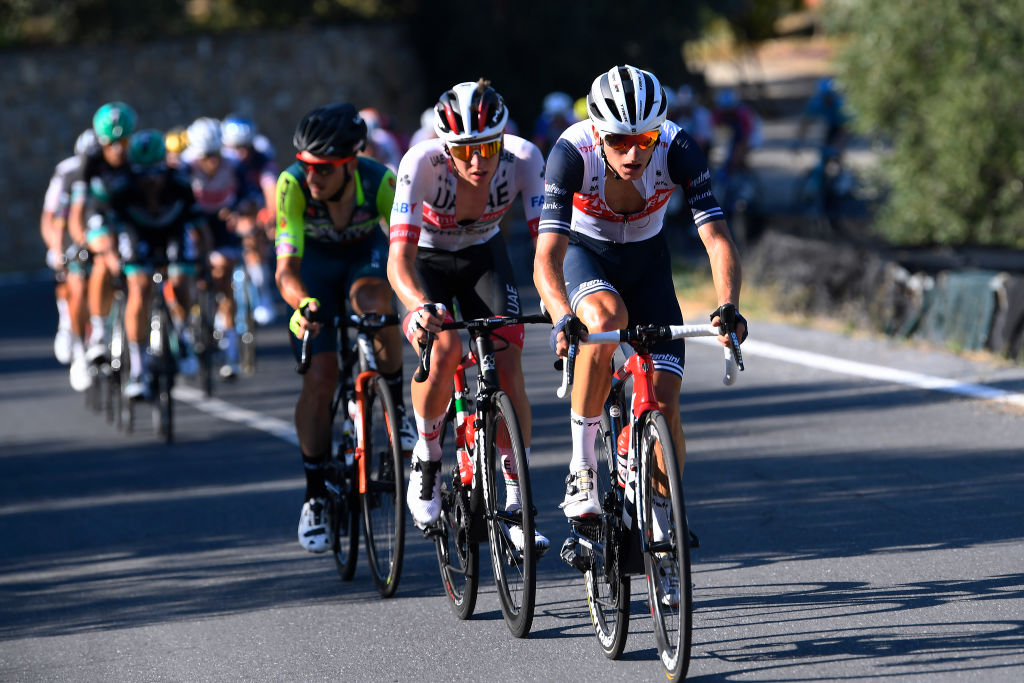Pogacar: Milan-San Remo can be pretty boring if you don't make it exciting yourself
Slovenian downplays cold in build-up to La Primavera

Not even Tadej Pogačar has escaped the outbreak of cold and flu that has hit the professional peloton these past two weeks, but the Slovenian’s symptoms won’t prevent him from lining up among the favourites for victory at Milan-San Remo on Saturday.
When Pogačar met with reporters in Lainate on Friday afternoon, the huskiness of his voice immediately suggested that he, too, had been stricken by illness, though not to the extent that he was ever likely to join the long list of withdrawals from Milan-San Remo.
"You can hear that I’m also not 100 percent with my nose. When I came home from Tirreno-Adriatico, I could barely go on the bike for three days. But yesterday and today I started to do some work on the bike and I feel ok, so I think for tomorrow it should be fine," said Pogačar.
"When you ride every day in cold air, going full gas on Carpegna, doing interviews afterwards in a tent at 5°C, you can get sick, it’s obvious. But it’s just a blocked nose, so I don’t think it’s going to affect the condition of the legs. I’ve raced with the flu before, it doesn’t change much."
Pogačar’s victory at Tirreno-Adriatico was garlanded by a remarkable solo offensive on Monte Carpegna and it maintained his perfect start to the 2022 season after triumphs at the UAE Tour and Strade Bianche. On that evidence, there can be little doubt that Pogačar - blocked nose notwithstanding - is the strongest of the 166 riders who will set out from the Vigorelli on Saturday morning.
The beauty of Milan-San Remo, however, lies in its subtlety. The relative mildness of the gradients of the Cipressa and the Poggio means that power alone is no guarantee of success on Via Roma. The first Monument of the season may have the most straightforward route, but the permutations inherent in its finale are endless.
Pogačar has raced Milan-San Remo once before, placing 12th in the pandemic-delayed edition of 2020, when he was prominent on the Cipressa. In the intervening 18 months or so, he has won two Tours de France and inscribed two Monuments on his palmarès. He returns to the Riviera with an altogether different billing.
Get The Leadout Newsletter
The latest race content, interviews, features, reviews and expert buying guides, direct to your inbox!
"When I did it the first time, it was after the Covid lockdown and all this. It was in August, it was quite hot, and it was a different course from the start to the sea,” Pogačar said.
"But it was the same final, and a similar style of race. I think I learned a lot from the first time, and tomorrow we will see if I learned something or not."
In 2021, Pogačar won Liège-Bastogne-Liège and Il Lombardia, the two Monuments most obviously suited to Grand Tour riders. On Saturday, he is seeking to become the first reigning Tour champion to win Milan-San Remo since Eddy Merckx in 1975, and he acknowledged that La Primavera was a unique sort of proposition.
"It’s in a class of its own, I think. It’s 300k long and it can be pretty boring if you don’t make the race exciting yourself," Pogačar said.
"The final is more or less always the same - Cipressa and Poggio. The Poggio is always all-out, six minutes. You really need to come as fresh as possible, which is hard after so many kilometres."
Cipressa or sprint

Pogačar’s superiority on Italian roads in recent weeks has led many in the gruppo to expect an onslaught from his UAE Team Emirates squad from the moment the race hits the headlands of the Riviera. The forecast for a tailwind in the finale also notionally favours attackers, heightening speculation that the winning move could take shape from as far out as the Cipressa - something not seen since 1996.
"Suicide? Maybe not," Pogačar said when asked to weigh up the idea of attacking on the Cipressa. "If you’re good, you can go clear. In the last couple of years, it was mission impossible, but you never know. In modern cycling, we have seen so many attacks from long distances already. Maybe in San Remo, we can see it as well.
"It’s going to be really fast until the climbs, and also the climbs will be much faster, because you really can fly up those climbs with a tailwind."
Matteo Trentin misses Milan-San Remo after suffering a delayed concussion at Paris-Nice, but UAE Team Emirates resisted the temptation to compensate for his missing speed by adding sprinter Fernando Gaviria to the line-up. Instead, the selection is built squarely around Pogačar.
"Managing the race will be difficult because all eyes will be on us," admitted Diego Ulissi.
Pogačar, for his part, was reluctant to single out any one rider as his chief rival, though he accepted that Wout van Aert (Jumbo-Visma) "has exceptional form now" and warned that the returning Mathieu van der Poel (Alpecin-Fenix) was not lining out simply to make up the numbers.
"We’ll see in the end tomorrow, but I don’t think he would come here just for training," he said.
Escaping men like Van Aert will not be straightforward, of course, and Pogačar knows that finishing speed is a critical part of a Milan-San Remo winner’s armoury. It’s not something he lacks. A sprint carried him to Liège-Bastogne-Liège victory last year, after all, and Van Aert only barely pipped him to the silver medal at the Tokyo Olympics
"I did two sprints in training today and they were not good," Pogačar joked. "Maybe after 300k it’s different, but first you need to get there and then it all depends on how fresh you come to 200 metres to go. Normally in the race, I get the adrenaline when I see the finish line."

Barry Ryan was Head of Features at Cyclingnews. He has covered professional cycling since 2010, reporting from the Tour de France, Giro d’Italia and events from Argentina to Japan. His writing has appeared in The Independent, Procycling and Cycling Plus. He is the author of The Ascent: Sean Kelly, Stephen Roche and the Rise of Irish Cycling’s Golden Generation, published by Gill Books.